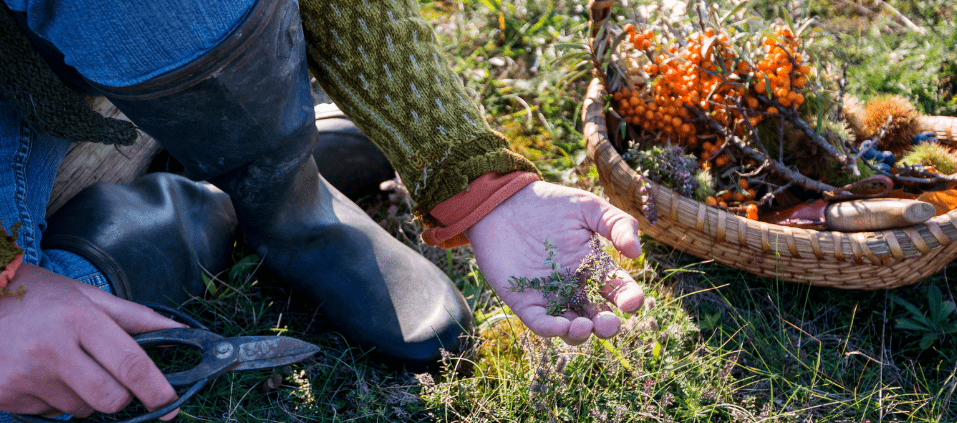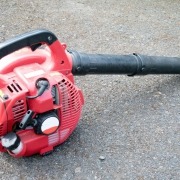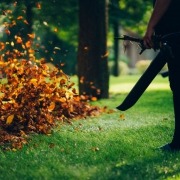Foraging in Your Backyard: Food-It-Yourself
Tracy Beard / Wednesday June 28, 2023
Looking for an excuse to get outdoors this summer? Want to pick up a new skill? Consider taking a crack at foraging! Foraging, wild food prep, and herbalism are steeped in cultural and historical significance. They’re a great way to learn something new and connect with the world around you, and today we’ll give you a basic guide to how to get started in your own backyard!
Why Forage?
Foraging has gotten popular in recent years, but don’t mistake it for a pop-up trend. It’s a valuable skill – and a common day-to-day practice for a lot of folks in the United States. If you’re contemplating giving it a try but remain unconvinced, consider these reasons why foraging is a great idea:
- Fresh air and exercise. Unless you’ve got a serious moisture problem in your home, you can’t exactly forage in your basement. Foraging is a great way to get outdoors for that daily dose of Vitamin D.
- Connection. Foraging, wild food prep, and herbalism are all steeped in tradition. Treat foraging as a learning experience as much as a way to get a tasty snack. Sustainable, mindful, and educated foraging is a fantastic way to connect with nature, your family, and the cultures found in your area – others and your own.
- You can do it anywhere! You don’t need to live out in the country to forage successfully. Plenty of folks do just fine foraging in urban centers. As you practice foraging and develop that connection with the world around you, spotting forageables becomes much easier.
- Many commonly foraged plants pack a nutritious punch. Dandelion, chickweed, and stinging nettles are just a few of the common foragables that can make for highly nutritious additions to your meals.
- Diversifying your palate. Foraged foods are a great way to add new flavors, spices, and cooking methods to your repertoire.
- Reducing your carbon footprint. Foraging near your home reduces the amount spent on transporting the food you eat, and reduces food waste.
- You might save a bit of money. Have you seen how much they’re charging for dandelion greens, assuming your local grocery store even has them? Foraged foods can reduce the amount of grocery store staples you need, and you’ll get them for free. The savings might not be that big at first, but it’s worth comparing.
A Beginners Guide to Foraging in Your Backyard
Don’t know what it is? Skip it.
This is the most important rule in the book. No exaggeration – it’s a matter of life and death. If you aren’t 100% sure of what something is, whether or not it’s been sprayed with pesticides, or how to safely prepare it, do not eat it. Many plants and fungi that grow in cultivated gardens or wild around homes are fatally toxic when consumed.
In urban and suburban areas, you’re contending with harmful herbicides or pesticides in addition to the “lookalikes” – plants and fungi that are dangerously toxic that look nearly identical to safer counterparts – that you need to watch out for in less populated areas.
Get educated before you start!
Foraging isn’t a hobby you should pursue blindly. Learn from the experts. You could dive into foraging videos online, join a local foraging club, take a class, or go on an excursion with a local expert. Learning not just what’s safe, but proper harvesting methods, the cultural or biological significance of the things you’re foraging, and how to gather without taking too much, are all vital skills that you won’t pick up on your own.
For safety, you should get your hands on some good reference material. There are tons of books on foraging and plant identification for just about everywhere. You can also nab an app for your phone that will ID plants based on photos you’ve taken.
Don’t forget food prep, either. Depending on what you have, foraged foods can make everything from pastries to alcoholic beverages. Once you know what you’re likely to find in your area, don’t forget how to read about how to safely prepare those items.
We can’t overstate the importance of knowing exactly what you’re foraging. You’re not just on the lookout for poisonous lookalikes. One part of a plant may be perfectly fine to eat, while another may be poisonous. An invasive weed that is tasty while young may become unsafe to eat raw as it ages – like garlic mustard.
Start simple, and stay close to home.
If you’re new to foraging, stick close to home, focus on plants that are easy to identify, and only eat a small amount of what you find. Save the deep woods mushroom hunting for when you’re more experienced, and don’t overindulge in your harvest, as you could discover an allergy you didn’t know you had, or otherwise make yourself sick.
What’re you looking for? Plenty of plants (weeds included) that grow, cultivated or naturally, in your own backyard are edible and easy to prepare. Dandelions, for example, are completely edible, and can be used to make everything from fritters to wine. If a rose of Sharon is growing in your garden, you can utilize both the leaves and flowers for various purposes such as salads and teas.
Don’t harvest from potentially contaminated areas.
For this guide, we’re focusing on foraging in your own backyard, but it’s still important to watch out for potential contaminants before you forage. Here’s what you’ll want to avoid:
- Do you live in a house that was built before the 1980s? Get the soil tested for lead before you forage. If the tests show high lead levels (from pre-lead regulation paint seeping into the land), do not forage.
- Is your yard or property sprayed with pesticides or herbicides? Don’t forage. Those chemicals will transfer to whatever you’ve gathered and can make you very sick.
- Do you live very near something that you know gets sprayed? Farmland or public utility areas are often sprayed, and those chemicals can drift.
- Do you live near a chemical plant or landfill? To avoid potentially dangerous chemical exposure, consider looking for safer places to start foraging.
Only forage from places where you have permission to do so.
Start in your backyard. Ask neighbors before taking from their properties, and research the foraging guidelines before you gather from public land like national or city parks. If you get caught somewhere you shouldn’t be or with something you shouldn’t have and you could wind up in a legal mess.
At every level – federal to municipal – individual parks will have different rules about what you can and can’t take. The National Park Service website will typically have some guidelines for national parks, and you can call your county/city office for park details at lower governmental levels.
Harvest ethically and sustainably.
In order for the practice of foraging to endure, we need to ensure there are things to forage. Respect for nature is imperative. So when you go out to gather, make sure you’re harvesting ethically and sustainably.
Here are some ways you can do that:
Gather only what you need, and leave plenty behind.
Gathering small amounts, and only taking the parts of the plant you plan on eating, is important for the sustainability of both the plant itself and local wildlife. Chances are, if you think a plant or mushroom is yummy, so do local animals, who need that food source to thrive.
Nab those invasive species first
An invasive species is a plant that is not native to the area – usually brought in for ornamental purposes generations ago – that has grown unchecked, crowding out indigenous flora. Things like garlic mustard, mugwort, kudzu, and Japanese knotweed are all potentially tasty invasive species you can harvest. Just be sure you aren’t allowing seeds to scatter when you take from these sorts of plants.
Know how to harvest each plant
Educating yourself on which parts of a plant are edible, when they are safe to eat, and how to harvest without damaging the plant, itself, are all vital skills to know for sustainable foraging. Don’t damage a tree by snapping a branch to get at its fruit, and don’t uproot native flora if the only edible parts are the leaves.
Find a great haul? Keep the location to yourself
This shouldn’t be too much of a problem if you’re sticking to your own home, but in general, don’t share your foraging spots online. If a spot gets too popular, it could lead to over-foraging or damage to the area – and if that spot is on your property, well, that can get pretty uncomfortable!
Step lightly, and leave nothing behind
This is a pretty easy one! Keep foraging groups small to avoid overharvesting or unnecessary damage to an area. Make sure you aren’t trampling nearby plants or disturbing or destroying animal dens, and pick up and properly dispose of any trash you find.
Be sure to clean your finds before you eat or prepare them
This might seem obvious, but you’ll want to clean your finds in fresh water before you consume them. This’ll get rid of surface dirt and potential stowaways like insects, slugs, or snails. If you have pets or frequent visits from strays in your yard, you can probably guess why a thorough wash is good to be on the safe side. (As a side note, just don’t harvest from your pet’s designated potty area in your yard.)
Wrapping Up
We trust that our introductory guide has set you off on the right path to start your foraging journey successfully! Do your research, pick up some highly reviewed reference books for your geographic area, and enjoy the fruits (and berries and greens) of your labor.
Looking for more guides to give you something to do this summer? Check out our blog for a whole slew of tips and tutorials for DIY home and garden projects.
Hello there! I’m Tracy, and I’m thrilled to be part of the Appliance Parts Pros team. With two years of service and hands-on experience here, I’ve had the privilege of helping numerous customers troubleshoot their home appliances and find DIY repair solutions.





Leave a Reply
Want to join the discussion?Feel free to contribute!